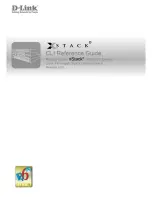
Manually Preparing the Back-End File Servers
ARX Site Planning Guide
1 - 21
As root, edit the /etc/exports file to accomplish all of these goals. To allow
mounts below the root of the share, you must use the
-alldirs
flag. For
security reasons, BSD only allows this flag for shares that map to block
devices. On the BSD machine, use the
df
command for a list of block
devices.
Consider the following example:
BSD2
‐
[/root]#
df
Filesystem
1K
‐
blocks
Used
Avail
Capacity
Mounted
on
/dev/da0s1a
495726
73274
382794
16%
/
devfs
1
1
0
100%
/dev
/dev/da0s1e
4058062
10390
3723028
0%
/users
/dev/da0s1f
29356354
10575988
16431858
39%
/usr
/dev/da0s1d
297326
11040
262500
4%
/var
BSD2
‐
[/root]#
On the above machine, you can export /, /dev, /users, /usr, and/or /var.
Consider the following example of a /etc/exports file that exports /usr to the
ARX:
#
Note
that
in
order
to
allow
the
Acopia
Switch
to
do
#
“submounting”,
you
must
set
the
export
with
a
‐
alldirs
#
flag.
This
means
you
must
also
set
the
export
dir
to
be
a
#
top
level
filesystem
found
on
a
/dev/<slice>.
/usr
‐
alldirs
‐
maproot=0
‐
network
192.168.25.0
‐
mask
255.255.255.0
This limits access to IPs only in the 192.168.25.0/24 subnet, the server
subnet for the ARX. Only the ARX should be able to access this export,
except for backups or other read-only activities.
To use the edited exports file, force the mountd process to re-read the file.
As root, find the PID for mountd and then send a kill -HUP to the PID.
For example:
BSD2
‐
[/root]#
ps
ax
|
grep
mountd
347
??
Is
0:03.21
/usr/sbin/mountd
‐
r
24817
p5
S+
0:00.00
grep
mountd
BSD2
‐
[/root]#
kill
‐
HUP
347
BSD2
‐
[/root]#
CIFS Servers and Client Authentication
Whereas NFS uses a client’s IP address for access control, CIFS uses the
client’s user account. Each CIFS share, directory, and file has an associated
Access Control List (ACL), a list of user accounts and the access privileges
of each. The ARX passes a CIFS client’s credentials through to each
back-end server, and the server applies its ACLs to the client’s identity. The
server has the authority to deny any of the client’s actions based on its ACL
configuration, just as though the client was accessing the server directly. No
special preparation is required for CIFS client authentication.
Autonomous ARX operations, such as migrating files between back-end
CIFS shares, require a Windows user identity so that the ARX can similarly
access servers. This identity, called a
proxy user
, is a valid user account in
Summary of Contents for ARX-VE
Page 1: ...ARX Site Planning Guide 810 0036 00...
Page 2: ......
Page 6: ...vi...
Page 8: ......
Page 64: ...Chapter 1 Site Planning 1 58...
















































